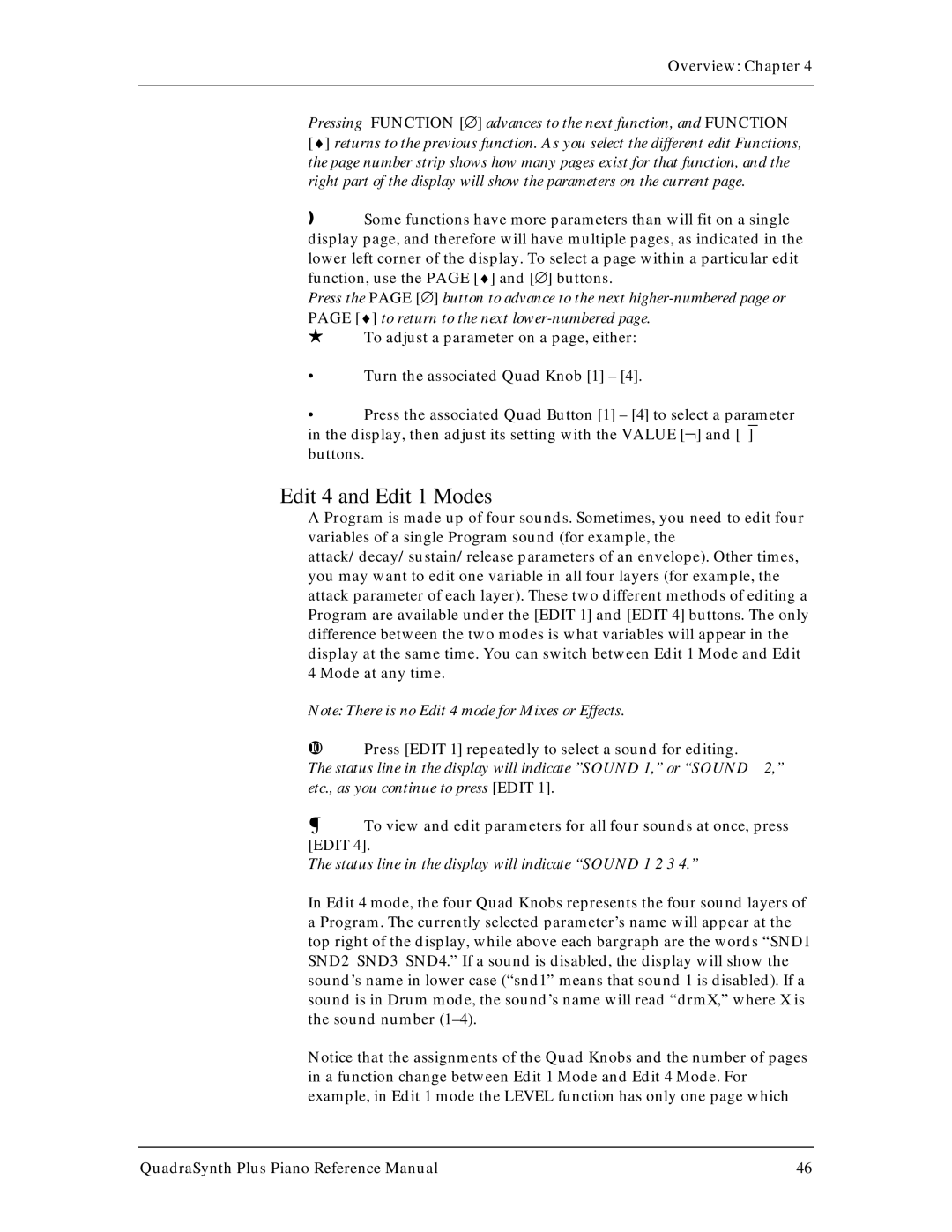
Overview: Chapter 4
Pressing FUNCTION [∅] advances to the next function, and FUNCTION
[♦] returns to the previous function. As you select the different edit Functions, the page number strip shows how many pages exist for that function, and the right part of the display will show the parameters on the current page.
ƒSome functions have more parameters than will fit on a single display page, and therefore will have multiple pages, as indicated in the lower left corner of the display. To select a page within a particular edit function, use the PAGE [♦] and [∅] buttons.
Press the PAGE [∅] button to advance to the next
PAGE [♦] to return to the next
H To adjust a parameter on a page, either:
•Turn the associated Quad Knob [1] – [4].
•Press the associated Quad Button [1] – [4] to select a parameter in the display, then adjust its setting with the VALUE [¬] and [‾] buttons.
Edit 4 and Edit 1 Modes
A Program is made up of four sounds. Sometimes, you need to edit four variables of a single Program sound (for example, the attack/decay/sustain/release parameters of an envelope). Other times, you may want to edit one variable in all four layers (for example, the attack parameter of each layer). These two different methods of editing a Program are available under the [EDIT 1] and [EDIT 4] buttons. The only difference between the two modes is what variables will appear in the display at the same time. You can switch between Edit 1 Mode and Edit 4 Mode at any time.
Note: There is no Edit 4 mode for Mixes or Effects.
¿Press [EDIT 1] repeatedly to select a sound for editing.
The status line in the display will indicate ”SOUND 1,” or “SOUND 2,” etc., as you continue to press [EDIT 1].
¡To view and edit parameters for all four sounds at once, press [EDIT 4].
The status line in the display will indicate “SOUND 1 2 3 4.”
In Edit 4 mode, the four Quad Knobs represents the four sound layers of a Program. The currently selected parameter’s name will appear at the top right of the display, while above each bargraph are the words “SND1 SND2 SND3 SND4.” If a sound is disabled, the display will show the sound’s name in lower case (“snd1” means that sound 1 is disabled). If a sound is in Drum mode, the sound’s name will read “drmX,” where X is the sound number
Notice that the assignments of the Quad Knobs and the number of pages in a function change between Edit 1 Mode and Edit 4 Mode. For example, in Edit 1 mode the LEVEL function has only one page which
QuadraSynth Plus Piano Reference Manual | 46 |
